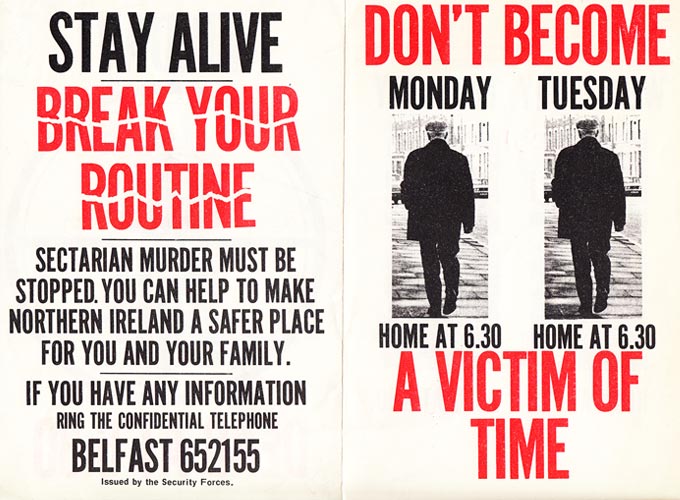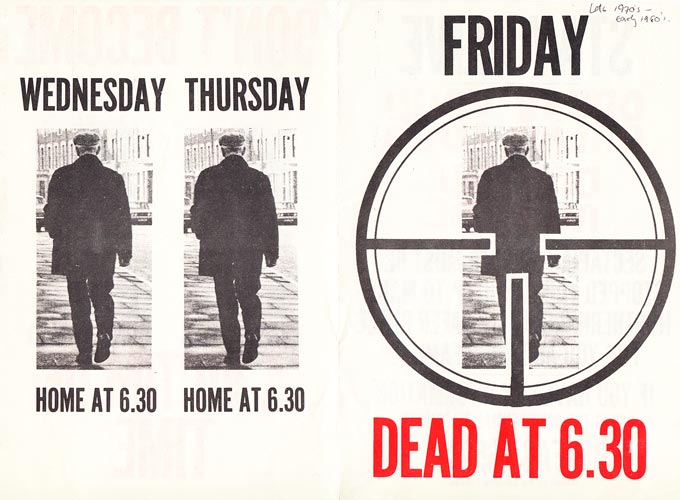Description
A leaflet advising civilians to vary their routines to avoid the threat of sectarian murder. In 1972, 467 people were killed as a result of terrorism in NI, 106 of those deaths were classified as sectarian. Sectarian killings were carried out by Loyalist and Republican paramilitaries and were motivated by differences in religious and/or political beliefs.
By 1972, Royal Ulster Constabulary (RUC) detection rates had fallen to 21% from the pre-Troubles level of 61.9%. Police were no longer able to patrol without a military escort and conduct regular duties such as door-to-door enquiries. Witnesses were often too scared to come forward and provide statements. Officers could not investigate scenes of crime thoroughly due to the threat of booby traps and snipers. New measures were taken to tackle the problem of sectarian murder. The Royal Military Police (RMP) and the RUC set up a joint patrolling and detective force. The police established the Confidential Telephone Number to encourage people to pass on information anonymously. The RUC Criminal Investigation Department (CID) was expanded to cope with the increasing workload and the detection rate improved to 27.6 %. In June 1975, ‘A’ squad was set up to deal with sectarian assassinations.
In 1976, Chief Constable Kenneth Newman took charge of the RUC. At that time, there were 500 unsolved murders including eight triple killings. The forensic science lab handled 11,000 cases a year evaluating explosives and ballistics evidence, five times the pre-Troubles level. RUC fingerprint officers, received 5,551 prints from scene of crime officers and working manually, performed 11,200 searches. Newman planned to make criminal investigations more efficient and effective. He renamed the ‘A’ squad the Headquarters Crime Squad. The unit was expanded with members of special branch and CID to create three regional crime squads. The Criminal Intelligence System was formed to provide back up and research for the new units. Operatives were stationed at all divisional headquarters and systematically collated information into one searchable computer database. The chief constable set up an additional fingerprint team in New Scotland Yard to help process the backlog of evidence. By the end of the year, 708 suspects had been charged, an increase of 121% over the 1975 figure.



